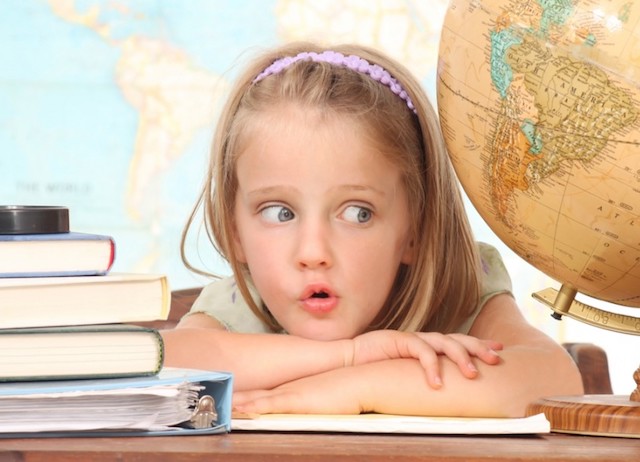Organization is the best friend of younger students
Автор: Алла Силосьева,Университет практической психологии
Independence and organization are loyal, inseparable friends. The child is able to organize himself when he begins to act with a reasonable degree of independence. He knows that it is easier to find the object he needs when it is in its place. He understands that he is responsible for his things, which means that he protects them.
What should parents pay attention to in order to teach their child to be organized?
Identify your child's work area: the place where they do their homework, read, write, and draw. Dear parents, the work area is of particular importance in the development and organization of the child.
Reading, writing, and drawing are fine, but it's equally important where the child does it. Does your child do their homework in your kitchen? in the bedroom? on the couch, lying on the floor? This is wrong. Remember the painfully familiar:
- Mom, have you seen my diary?
- Aah, I can't find a Russian textbook!
– I lost my pen and pencil again.
- I left the room with my math notebook. Now the notebook is gone!
Great! We are looking for a notebook with the whole family for half an hour, or even half a day. The notebook, of course, may appear in some miraculous way within a year, but by that time it will no longer be needed.
And when a child has a Desk with lockers, then usually all school supplies are in their places. The Distance exercise "Order on the desktop" helps the child well.
One of our participants at the Children's Distance created a wonderful checklist, where she wrote:
"Everything for VPR is in the folder with the Bear, the folder with the Bear in the nightstand on the left, on the bottom shelf. I'm looking for school notebooks, textbooks in the upper Cabinet on the right, and so on. Katya is 11 years old, but she has already mastered the Golden rule for herself: order on the table – order in the head."
What else is good if the child has his work area? In addition to the fact that all the accessories are in their places, the child writes and reads at a Desk that is adapted to their height and age. In the period from six to eight years, the process of forming posture begins, and not only his health, but also his beautiful, confident appearance depends on where he writes and how he sits.
Everything is fine when there is a plan for the day
Forgot... This is an irritating word for parents, but very convenient for children.
– What did you get in English?
- I forgot ...
- Where's your tracksuit?
- I forgot it at school.
Who do you think is more worried in the end: the child or the mother? Mother! And it's easier for a child to forget.
In this situation, the plan of the day helps. Where to start? Make a check-list for a month. If you write a long list of things to do for the day and hang it on the refrigerator, then most likely it will remain there for beauty. It is easier for a child to remember the tasks that they perform every day. To achieve results, we divide the day into MORNING, LUNCH, and EVENING! For each period of the day, we write down three tasks that the child will complete. The task that the child has done is marked with a check mark. The more ticks, the better the day. For example, we have this:
MORNING:
Wake up at 7 o'clock.
Exercise
Cold shower
LUNCH:
Check and fill out the diary.
Take a walk, play.
Wash the dishes.
EVENING:
Homework
Clean up
Prepare a backpack, clothes for tomorrow.
We make a plan together with the child based on the principle-what do you want to do and what is useful for you to do?
We give the child clear instructions
Observe how you interact with your child during the day. It will be difficult for the child to fulfill your request if it does not contain clear instructions. I watched my grandmother teach her granddaughter to clean up her things: "Why don't you put your things away? Look, everything is scattered around the house! Is it beautiful? You're a girl, and you still can't learn to keep track of your things! That's why you never find anything!»
What instructions does the child receive here and what should they do?
- Find an excuse why everything is scattered? (finds)
- Look around as everything is "beautiful"?
- Think about why he doesn't put his things in the right place?
Whatever! It's easier to take offense at your grandmother and respond: "You're always like that!»
We adults often disorient a child when we simultaneously Express our dissatisfaction and teach them how to do the right thing. Therefore, we clearly and briefly give instructions on what the child should do:
- Put things on his shelf.
- Wash the dishes.
- Write carefully.
- Straighten your back.
If it is difficult for a child to complete a task on their own, we show them step by step how to do it correctly two or three times. As practice shows, the next time he will cope on his own, and he will make a discovery for himself: "The more I train, the better I get!»
